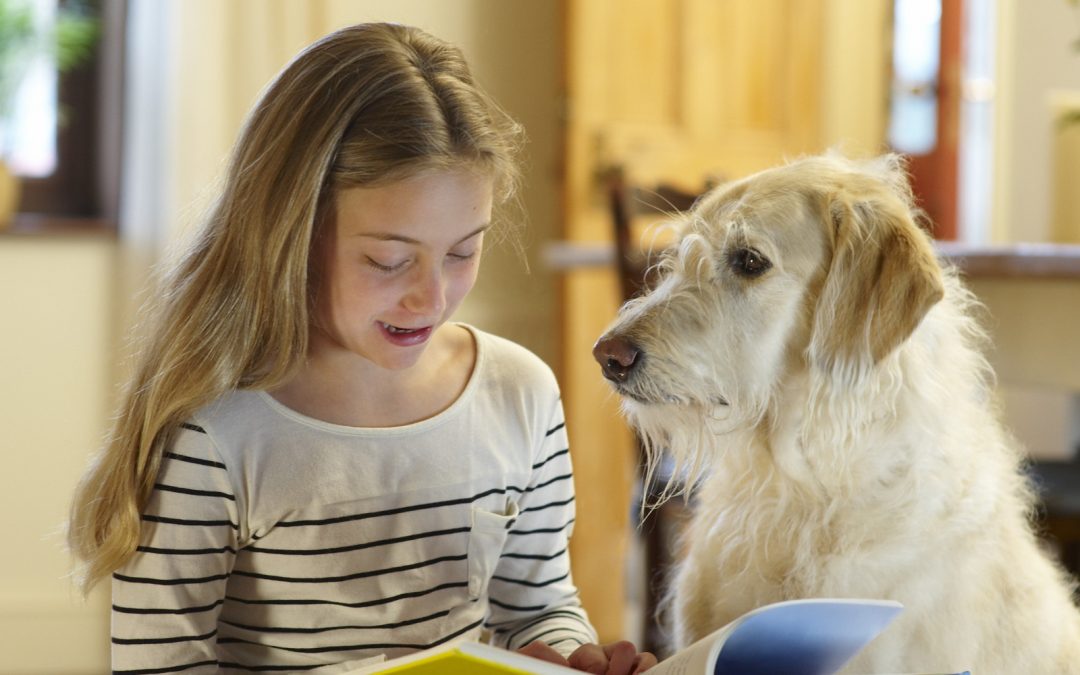
Dogs and Reading: an Alternative Method to Boost Confidence
Any parent of a child with reading difficulties will undoubtedly be able to catalogue a whole host of approaches and methods they’ve tried over the years to encourage and develop their loved one. There are many successful methods out there, but as we know, every child is different – and sometimes a combined approach can be a good idea. If this sounds like you and your child, then perhaps you should consider investigating reading with dogs.
Paws for thought
Well known for their ability to assist those with physical disabilities, dogs are also increasingly being used for those with mental difficulties. Research has been conducted which shows that interaction with a friendly therapy dog reduces levels of stress hormones and blood pressure; and that this is more effective than interaction with a friendly human. Reading with dogs helps to create a calming and relaxing environment for the development of your child’s reading skills.
Dogs are non-judgemental, and not being able to read themselves means they do not appear superior to the child, as an adult might. Reading with dogs allows the child to dictate the pace and progress of a session, and does not react to minor mistakes of pronunciation that an adult reflexively might.
They provide unconditional support and love, which is valuable for children with self-esteem issues connected to their reading ability. The focus of the session becomes the dog, rather than the child themselves; many parents report that their child is much more motivated and excited to read because it means spending time and reading with the dog.
Moving forward
This means that your child has the opportunity to create new, positive memories associated with reading and speaking aloud, which can help to overcome previous bad experiences of embarrassment or bullying they may have encountered. A growing confidence in themselves and their abilities also shows in their overall self-worth, as well as their social skills and ability to interact with others calmly and patiently and respectfully; skills they pick up from reading with the dogs.
If this sounds like something which would benefit your child, then look into where you might be able to access a therapy reading dog locally. Reading to dogs is growing in popularity, but is still not necessarily available everywhere. In this situation, think about what the key benefits are and how you can achieve these in a different but similar setting. As long as you have an animal happy to sit quietly while the child reads, it doesn’t need to be a fully trained therapy dog: ask neighbors or friends with calm and sensible cats or dogs if you can visit with your child for a reading session.
Learn more about the New PRIDE Reading Program
________________________________________________________________________________________
Jocelyn Brown is a professional freelancer writer and mother. She loves the freedom that comes with freelancing and the versatility it allows her in covering many different topics and themes. When not at work she enjoys running, hikes in the country and making the most of family time.
